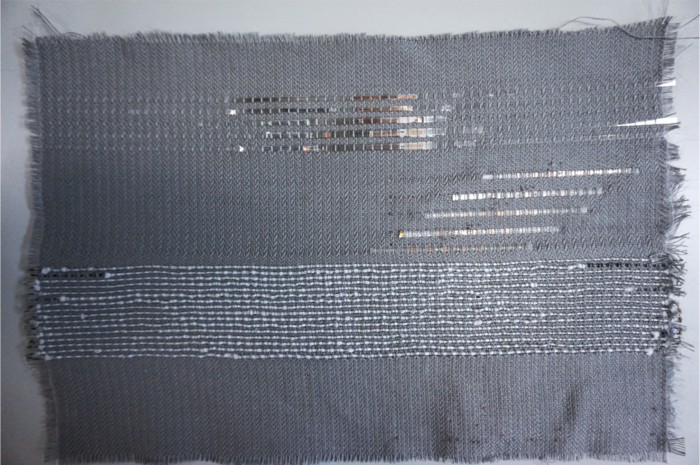Scientists have built next-generation smart textiles that include LEDs, energy harvesting, sensors, and storage and can be made cheaply, in any form or size, using the same machines that make the clothes people wear every day.

Image Credit: University of Cambridge.
The international group, spearheaded by the University of Cambridge, has proved that large-scale woven displays are possible, but these previous examples were created using specialized manual laboratory equipment. Other smart textiles can be made in specialized microelectronic fabrication facilities, but they are very expensive and generate a lot of waste.
However, the researchers discovered that weaving optoelectronic, electronic, sensing, and energy fiber components on the same industrial looms used to make traditional textiles may produce flexible displays and smart fabrics far more cheaply and sustainably.
The findings, published in the journal Science Advances, show how smart textiles could substitute for more extensive electronics in industries such as electronics, automotive, fashion, and construction.
Despite recent advances in developing smart textiles, current manufacturing procedures have limited their functionality, dimensions, and shapes.
We could make these textiles in specialized microelectronics facilities, but these require billions of pounds of investment. In addition, manufacturing smart textiles in this way is highly limited, since everything has to be made on the same rigid wafers used to make integrated circuits, so the maximum size we can get is about 30 cm in diameter.
Dr Sanghyo Lee, Study First Author, Department of Engineering, University of Cambridge
Dr. Luigi Occhipinti, also from the Department of Engineering, who co-led the research adds, “Smart textiles have also been limited by their lack of practicality. You think of the sort of bending, stretching, and folding that normal fabrics have to withstand, and it’s been a challenge to incorporate that same durability into smart textiles.”
Some researchers demonstrated last year that if smart textile fibers were coated with polymers that can endure stretching, they may be compatible with traditional weaving techniques. They created a 46-inch woven demonstrator display using this method.
The researchers have now demonstrated that smart textiles may be manufactured utilizing automated procedures with no restrictions on size or shape. Several types of fiber devices, such as light-emitting diodes, energy storage devices, and transistors, were created, encapsulated, and combined with regular synthetic or natural fibers to create smart textiles through automated weaving.
An automated laser welding process with electrically conductive adhesive was used to attach the fiber devices.
All of the techniques were optimized to minimize damage to the electronic components, resulting in smart textiles that are strong enough to endure the stretching of an industrial weaving machine. The encapsulating method was designed with the functionality of the fiber devices in mind, and the mechanical force and thermal energy were thoroughly examined to enable automated weaving and laser-based interconnection, respectively.
Working in collaboration with textile manufacturers, the study team created test patches of smart textiles measuring approximately 50 × 50 cm. However, this can be scaled to more significant dimensions and produced in huge quantities.
These companies have well-established manufacturing lines with high throughput fiber extruders and large weaving machines that can weave a meter square of textiles automatically. So when we introduce the smart fibers to the process, the result is basically an electronic system that is manufactured exactly the same way other textiles are manufactured.
Dr Sanghyo Lee, Study First Author, Department of Engineering, University of Cambridge
According to the researchers, huge, flexible displays and monitors may be manufactured on industrial looms rather than in specialized electronics manufacturing facilities, making them significantly less expensive. However, further process optimization is required.
The flexibility of these textiles is absolutely amazing. Not just in terms of their mechanical flexibility, but the flexibility of the approach, and to deploy sustainable and eco-friendly electronics manufacturing platforms that contribute to the reduction of carbon emissions and enable real applications of smart textiles in buildings, car interiors, and clothing. Our approach is quite unique in that way.
Dr Luigi Occhipinti, Department of Engineering, University of Cambridge
The study was supported in part by the European Union and UK Research and Innovation.
Journal Reference
Lee, S., et al. (2023). Truly form-factor-free industrially scalable system integration for electronic textile architectures with multifunctional fiber devices. Science Advances. doi.org/10.1126/sciadv.adf4049.